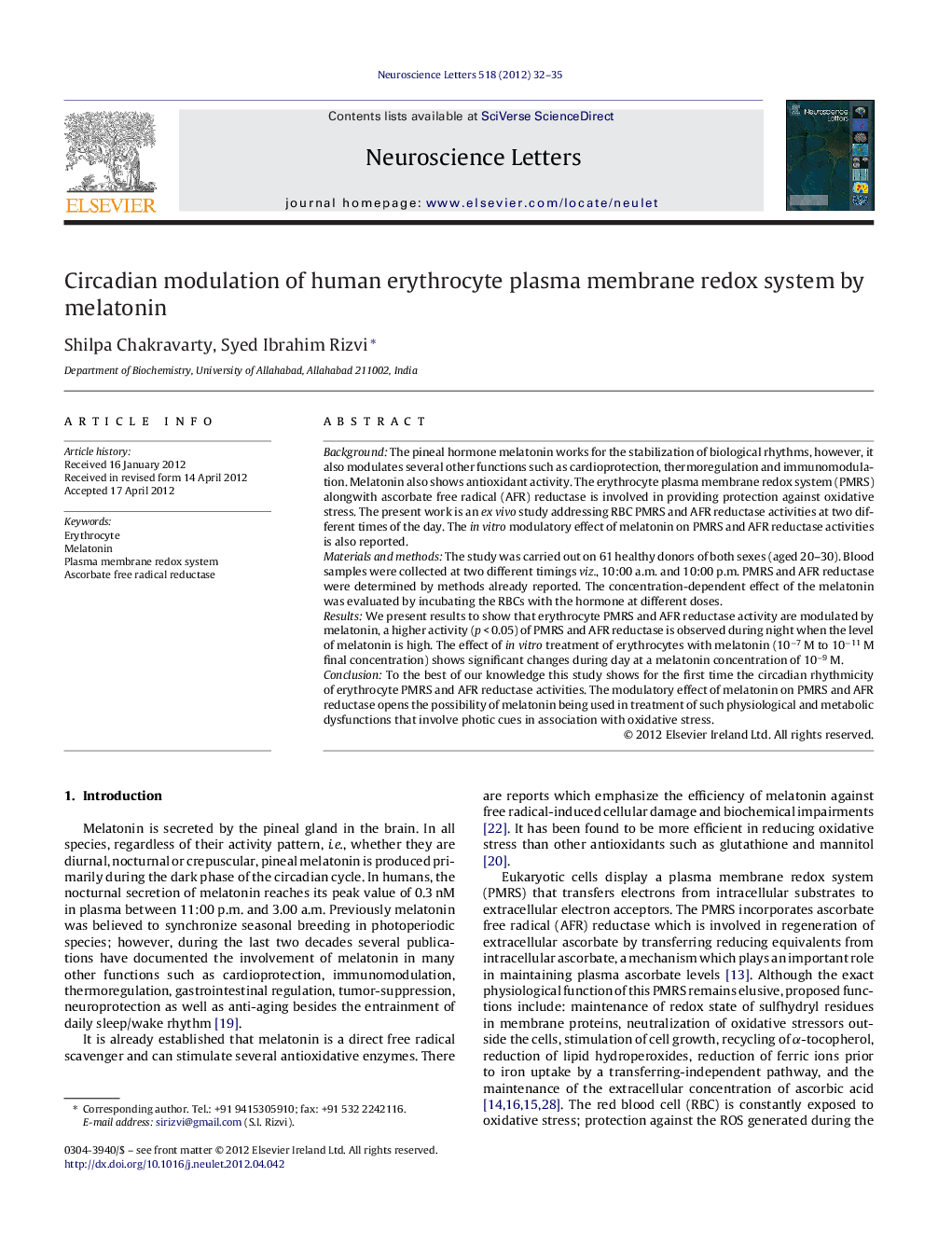| کد مقاله | کد نشریه | سال انتشار | مقاله انگلیسی | نسخه تمام متن |
|---|---|---|---|---|
| 6284001 | 1296659 | 2012 | 4 صفحه PDF | دانلود رایگان |

BackgroundThe pineal hormone melatonin works for the stabilization of biological rhythms, however, it also modulates several other functions such as cardioprotection, thermoregulation and immunomodulation. Melatonin also shows antioxidant activity. The erythrocyte plasma membrane redox system (PMRS) alongwith ascorbate free radical (AFR) reductase is involved in providing protection against oxidative stress. The present work is an ex vivo study addressing RBC PMRS and AFR reductase activities at two different times of the day. The in vitro modulatory effect of melatonin on PMRS and AFR reductase activities is also reported.Materials and methodsThe study was carried out on 61 healthy donors of both sexes (aged 20-30). Blood samples were collected at two different timings viz., 10:00 a.m. and 10:00 p.m. PMRS and AFR reductase were determined by methods already reported. The concentration-dependent effect of the melatonin was evaluated by incubating the RBCs with the hormone at different doses.ResultsWe present results to show that erythrocyte PMRS and AFR reductase activity are modulated by melatonin, a higher activity (p < 0.05) of PMRS and AFR reductase is observed during night when the level of melatonin is high. The effect of in vitro treatment of erythrocytes with melatonin (10â7 M to 10â11 M final concentration) shows significant changes during day at a melatonin concentration of 10â9 M.ConclusionTo the best of our knowledge this study shows for the first time the circadian rhythmicity of erythrocyte PMRS and AFR reductase activities. The modulatory effect of melatonin on PMRS and AFR reductase opens the possibility of melatonin being used in treatment of such physiological and metabolic dysfunctions that involve photic cues in association with oxidative stress.
⺠An increased activity of erythrocyte PMRS is observed at night. ⺠Melatonin activates PMRS at 10â9 M final concentration. ⺠Melatonin may be used in conditions which result in redox imbalance.
Journal: Neuroscience Letters - Volume 518, Issue 1, 14 June 2012, Pages 32-35